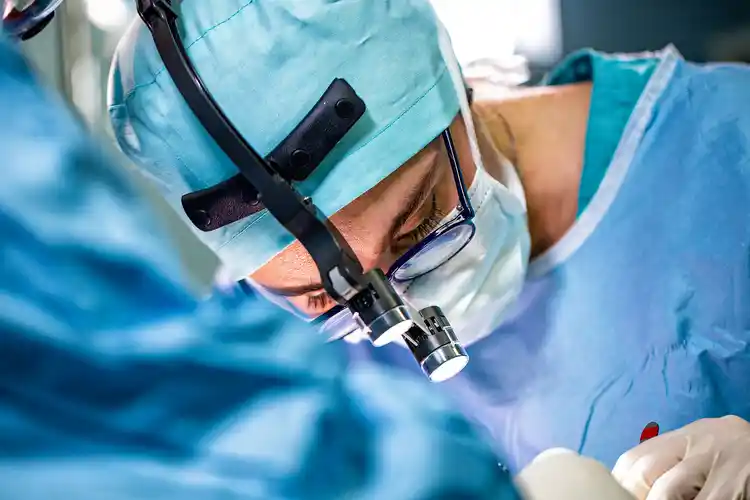Treatment Options for Early-Stage Breast Cancer

Hide Video Transcript
Video Transcript
[MUSIC PLAYING]
One of the most common types of breast cancers that we see is what's called an invasive ductal carcinoma and that is hormone or estrogen and progesterone positive and HER2 negative. The typical order of treatment consists of starting with surgery, oftentimes followed by radiation and then followed by some type of medical therapy. However, in hormone-negative breast cancers, oftentimes starting off with different types of medical therapies first, potentially chemotherapy, then followed by surgery and then followed by potentially radiation.
Breast cancer care and breast cancer outcomes in terms of survival and recurrence are optimized when a care is multidisciplinary, where it incorporates breast surgery, breast radiation, and medical oncology therapies all combined. And having a multidisciplinary team allows for organization and delivery of all of these different types of therapies. Lifestyle factors can definitely play into helping patients both through treatment and then also in terms of decreasing the risk of recurrence or future breast cancers.
Support is the most important thing. So whether that's family, friends, survivorship networks, healthy lifestyle, which is composed of physical activity during the week, typically about 120 minutes of some type of light aerobic activity, balanced healthy eating. The follow-up process is definitely an important element of care and typically consists of clinical follow up with the surgical team such as myself, usually every six months. And that continues on for anywhere from 2 to 5 years after the initial diagnosis.
This is supplemented by clinical exams and some type of imaging, usually mammograms, starting every six months after surgery and then beginning to space out to about every year, depending upon findings. But the 2- to 5-year time frame after a diagnosis is important for surveillance to make sure patients are recovering well and then also make sure there's no signs or concern for recurrence.
IAN GREENWALT, MD
One of the first things I do when I meet a patient who's been newly diagnosed with an early-stage breast cancer is take a step back, because it can be initially an overwhelming encounter. We have the time and the options to consider a very thorough and detailed plan. The advantage of an early-stage breast cancer is that most of our options are available. So treatment can vary depending upon the type of breast cancer a patient's diagnosed with. One of the most common types of breast cancers that we see is what's called an invasive ductal carcinoma and that is hormone or estrogen and progesterone positive and HER2 negative. The typical order of treatment consists of starting with surgery, oftentimes followed by radiation and then followed by some type of medical therapy. However, in hormone-negative breast cancers, oftentimes starting off with different types of medical therapies first, potentially chemotherapy, then followed by surgery and then followed by potentially radiation.
Breast cancer care and breast cancer outcomes in terms of survival and recurrence are optimized when a care is multidisciplinary, where it incorporates breast surgery, breast radiation, and medical oncology therapies all combined. And having a multidisciplinary team allows for organization and delivery of all of these different types of therapies. Lifestyle factors can definitely play into helping patients both through treatment and then also in terms of decreasing the risk of recurrence or future breast cancers.
Support is the most important thing. So whether that's family, friends, survivorship networks, healthy lifestyle, which is composed of physical activity during the week, typically about 120 minutes of some type of light aerobic activity, balanced healthy eating. The follow-up process is definitely an important element of care and typically consists of clinical follow up with the surgical team such as myself, usually every six months. And that continues on for anywhere from 2 to 5 years after the initial diagnosis.
This is supplemented by clinical exams and some type of imaging, usually mammograms, starting every six months after surgery and then beginning to space out to about every year, depending upon findings. But the 2- to 5-year time frame after a diagnosis is important for surveillance to make sure patients are recovering well and then also make sure there's no signs or concern for recurrence.
